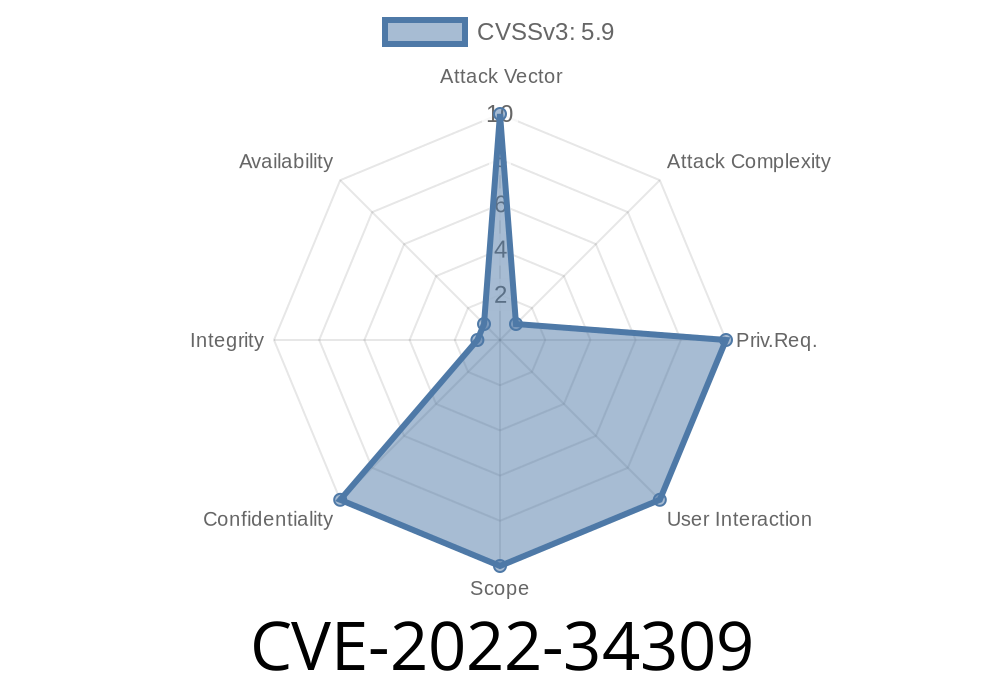In June 2022, researchers discovered a serious cryptography flaw in IBM CICS TX Standard and Advanced 11.1. Registered under CVE-2022-34309 and tracked by IBM X-Force as ID 229440, this vulnerability is about the use of weaker than expected cryptographic algorithms — opening the door for attackers to possibly decrypt highly sensitive business data.
Let’s break down what’s going on, why this matters, and give a code-based look at how attackers might exploit weak cryptography in this IBM system.
What is IBM CICS TX?
IBM CICS TX is a high-performance transaction server for deploying CICS (Customer Information Control System) applications on Linux and cloud platforms. It’s popular for running core business apps that require both high speed and reliability.
The standard and advanced editions of CICS TX 11.1 are used by banks, insurers, and major retailers — industries where data privacy is crucial.
What Is Wrong in CVE-2022-34309?
According to IBM’s advisory and the National Vulnerability Database (NVD), the vulnerability stems from CICS TX using *weaker than expected cryptographic algorithms*. What this usually means is:
Short key lengths (such as 56-bit or 112-bit keys)
- Weak or deprecated ciphersuites in protocols like SSL or TLS (such as support for RC4, MD5, or weak Diffie-Hellman groups)
The net effect? An attacker who intercepts encrypted data could potentially decrypt it with modern hardware or even in the cloud, exposing sensitive business operations or customer information.
Exploit Details: How Could This Be Attacked?
Imagine a bank uses CICS TX to process sensitive transactions over a corporate network. An attacker sniffing the network traffic might see encrypted data — and expect it to be impossible to crack. But if those messages are protected using weak algorithms, the odds change:
Passive Eavesdropping: The attacker captures encrypted messages in transit.
2. Offline Brute Force: They analyze the captured data using powerful GPUs or cloud services, trying all possible keys (brute force) or exploiting known algorithm flaws.
3. Plaintext Recovery: If keys are short or the encryption is fundamentally weak, the attacker could successfully decrypt the messages.
Example Attack Scenario
Suppose CICS TX is using 3DES encryption (with a 112-bit key length) to secure transactional data. Using modern tools, even ambitious attackers could recover plaintext from these encrypted dumps by focusing on 3DES’s known vulnerabilities.
A typical CICS TX SSL configuration might look like this in a properties file or a Java context
security.ssl.enabled=true
security.ssl.ciphers=SSL_RSA_WITH_3DES_EDE_CBC_SHA, SSL_RSA_WITH_RC4_128_MD5
security.ssl.protocols=TLSv1,SSLv3
*Note: 3DES and RC4 ciphers, and old protocol versions like TLSv1 and SSLv3, are now deprecated due to weaknesses.*
Demonstration: Cracking Weak 3DES Encryption
Let’s say you manage to capture intercepted network traffic using Wireshark. If old 3DES is used, you can use tools like John the Ripper or hashcat to brute-force the key. Here’s a simplified snippet showing brute-forcing a DES-encrypted blob (for educational purposes only):
from pyDes import des, triple_des, CBC, PAD_PKCS5
data = bytes.fromhex("<sniffed_ciphertext_hex>")
key = b"WEAKKEY!" # Example of a short/known key
k = triple_des(key, CBC, b"12345678", pad=None, padmode=PAD_PKCS5)
decrypted = k.decrypt(data)
print("Decrypted:", decrypted)
*This illustrates how a predictable or weak 3DES key can be tried, especially if you can guess it from the context.*
What Should Users Do?
IBM's official response: Upgrade or patch to a fixed product version and review your system’s cipher and protocol configuration. Remove support for insecure ciphers (like RC4, 3DES, DES), and stick to TLS 1.2/1.3 with strong ciphers like AES-GCM.
On your systems
- Audit your configurations. Remove old SSL/TLS protocols and ciphers.
Force strong encryption: Use AES-256 and TLS 1.2 or later.
- Regular updates: Monitor IBM’s security bulletins for guidance.
References and Further Reading
- IBM Advisory for CVE-2022-34309
- NVD Entry for CVE-2022-34309
- X-Force Vulnerability Report: 229440
- Mitre CVE Page
Final Thoughts
Weak crypto isn’t just a theoretical concern. As this IBM CICS TX vulnerability shows, using outdated ciphers and protocols can easily turn “secure” business apps into a goldmine for hackers. Always audit your environments for strong cryptography — and patch vulnerabilities like CVE-2022-34309 fast.
Timeline
Published on: 02/12/2024 19:15:08 UTC
